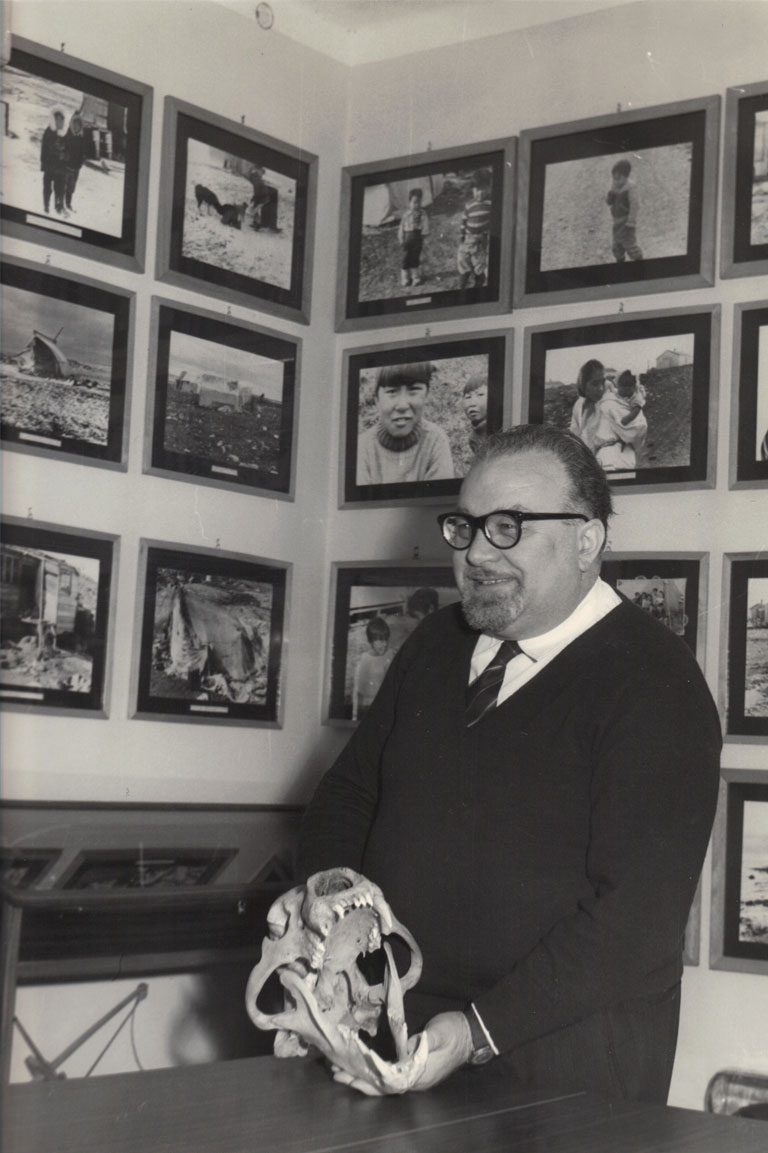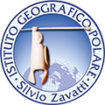POLAR GEOGRAPHIC Institute
Silvio Zavatti
The Polar Zavatti Geographical Institute was founded in Forlì in 1944 by the explorer and scholar Silvio Zavatti.

Silvio Zavatti
Silvio Zavatti was born in Forlì on November 10th, 1917. He played a key role in the international panorama carrying out several scientific expeditions; one in Antarctica and five in the Arctic, Canada, Greenland and Lapland.
Captain of long course for two years on an English ship, met, still twenty-year olds, the first iceberg, desiring to know and to study closely the polar environment.
Silvio Zavatti participated in the Second World War. Then, he took part in the Liberation war and in the renaissance of the democratic institutions. For this reason, Zavatti was named the first Forlì Deputy Major in the council imposed by the National Liberation Committee and beside Franco Agosto.
Simultaneously to the political engagement, he launched an intensive scientific activity. In 1944, Zavatti founded the Polar Geographic Institute in his home town.
In 1945, he moved to Civitanova Marche, where he performed his duties as assistant of Geography in the University of Urbino. He also became the Director of the municipal Library in Civitanova Marche. In that year, he get the “Publishing Company Zavatti”, and he could print the first issue of a scientific-outreach magazine, “Il Polo”. This magazine, which is still printed, allowed to Zavatti to get in touch with several institutions, researchers and universities worldwide.
In the early years of the Institute, he arranged six polar expeditions. In 1958, he planned the construction of a permanent Italian scientific station in the Queen Maud Land, in the Norwegian Antarctic sector. In 1959, during the International Geophysics Conference, he was the first to reach the peri-antarctic Bouvet Island. Thanks to that expedition, a new small bay was discovered. That bay was named as one of the few Italian politician who ever supported the Polar Institute, senator Tupini. The aim of the Antarctic expedition was to install a meteorological station. In fact, the first step of the project was to evaluate the real possibility to establish a permanent scientific research station. Unfortunately, due to a lack of funds, the operational phase was never implemented.
In 1958, Zavatti published the first Polar Atlas, which won the National Research Council (CNR) prize by Vacchelli Foundation.
Silvio Zavatti met the Inuit, for the first time in 1961, at Rankin Inlet in the Canadian Arctic sector.
During his expeditions, he carried out researches on customs and traditions, on string games, songs and dances. From this memorable encounter, he started a struggle as paladin of the ice people.
In 1962, he was with Walter Minestrini and Vladimiro Riccobelli in Lapland, among Sami people. Here, he studied the ergology of nomad Sami (Lapp) and he collected several artistic and daily-use material.
In 1963, he reached the Oriental Greenland, in the district of Angmagssalik. In this expedition he carried out researches on psychology, dances, arts, songs, educational system, and on the human ecology. He was accompanied by the doctor Massimo Cirone. They also discovered a unique archeologic evidence: a graffito on stone representing a racing dog. This graffito dated back to Saqqaq culture [link alla pagina https://it.wikipedia.org/wiki/Cultura_Saqqaq] (about 2000 years b.C.). From this experience, Zavatti started to publish several pieces to focus the attention on the safeguard of ancient uses and traditions of Inuit people, overwhelmed by the progress and the sudden “civilization”.
In 1967 and 1969, he was again in the Canadian Arctic. The first year in the Rankin Inlet village, already visited in 1961. The second year he was in Repulse Bay. At Rankin Inlet he completed the researches started in 1961 and shoot two colour documentaries on tundra life and on string games. At Repulse Bay, besides ethnographic studies, he carried out topographic observations that allow the correction of several errors on Canadian topographic maps. He studied also the ruins of Fort Hope, built in 1946 by the England explorer John Rae.
The expedition to Repulse Bay in 1969 was the last adventure of Zavatti as explorer. With the material collected from his journeys, he opened the Polar Museum in Civitanova Marche, his home town. He participated to eminent international conferences. In 1970, he organized in Civitanova Marche the International Polar Conference, while in 1983, he joined the Paris Conference as lecturer.
In 1971 he published a passionate pieces on the Inuit nation. Later, in 1976, Inuit of the Canadian Arctic, claimed their autonomy form the Canadian Government. Fourteen years later Zavatti’s death, Inuit realized their dream, establishing the territory of Nunavut, which in Inuktitut means “Our Earth.”
With a heart disease, Silvio Zavatti died in Ancona on May 13 th 1985, when he was seventy-seven years old.
He gifts us an enormous cultural, historical and scientific heritage, two thousand pieces and booklets, many books, an infinity of papers published on the most import specialized journals, and finally a Moral Last Will, addressed to youth “in order to find in the study and in the arduous research the way to raise themselves and the Nation” (from Terre lontane, i diari inediti di Silvio Zavatti, by Luigi Martellini, Ed. SetteCittà, 2010).
since 30
June 1945
Zavatti Archive and
The Polo revised
Through the splendid halls with frescoed ceilings of Palazzo Paccarone you will find yourself catapulted into the camp of a polar explorer, among tents, sledges and crates carefully arranged and ready for the long journey through the icy winds and glaciers of the far North. Venturing among polar bears, reindeer, arctic foxes, narwhals, walruses, seals, whales, you can finally rest in the tranquil Inuit villages. You will come into contact with the culture, art, dance and traditions of a people that so fascinated Silvio Zavatti that he became the champion and a staunch defender of their rights.
